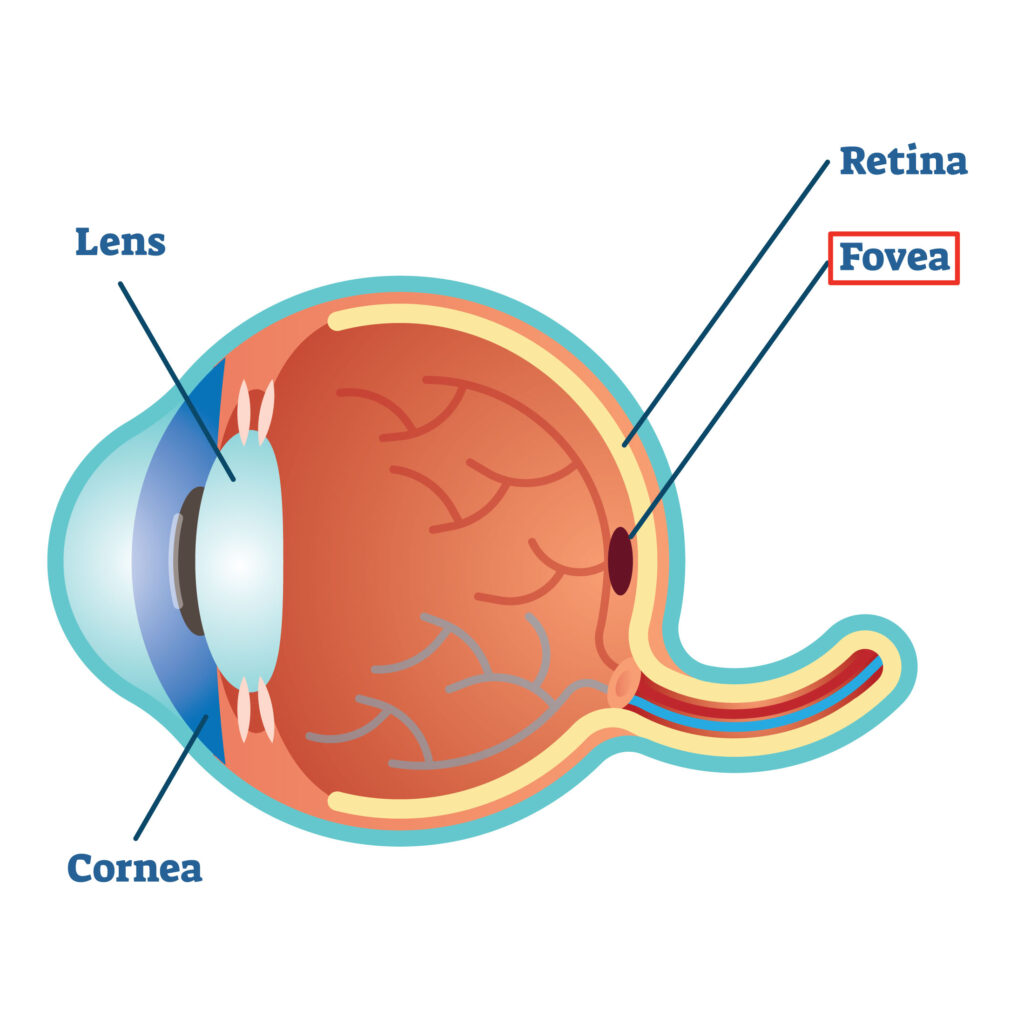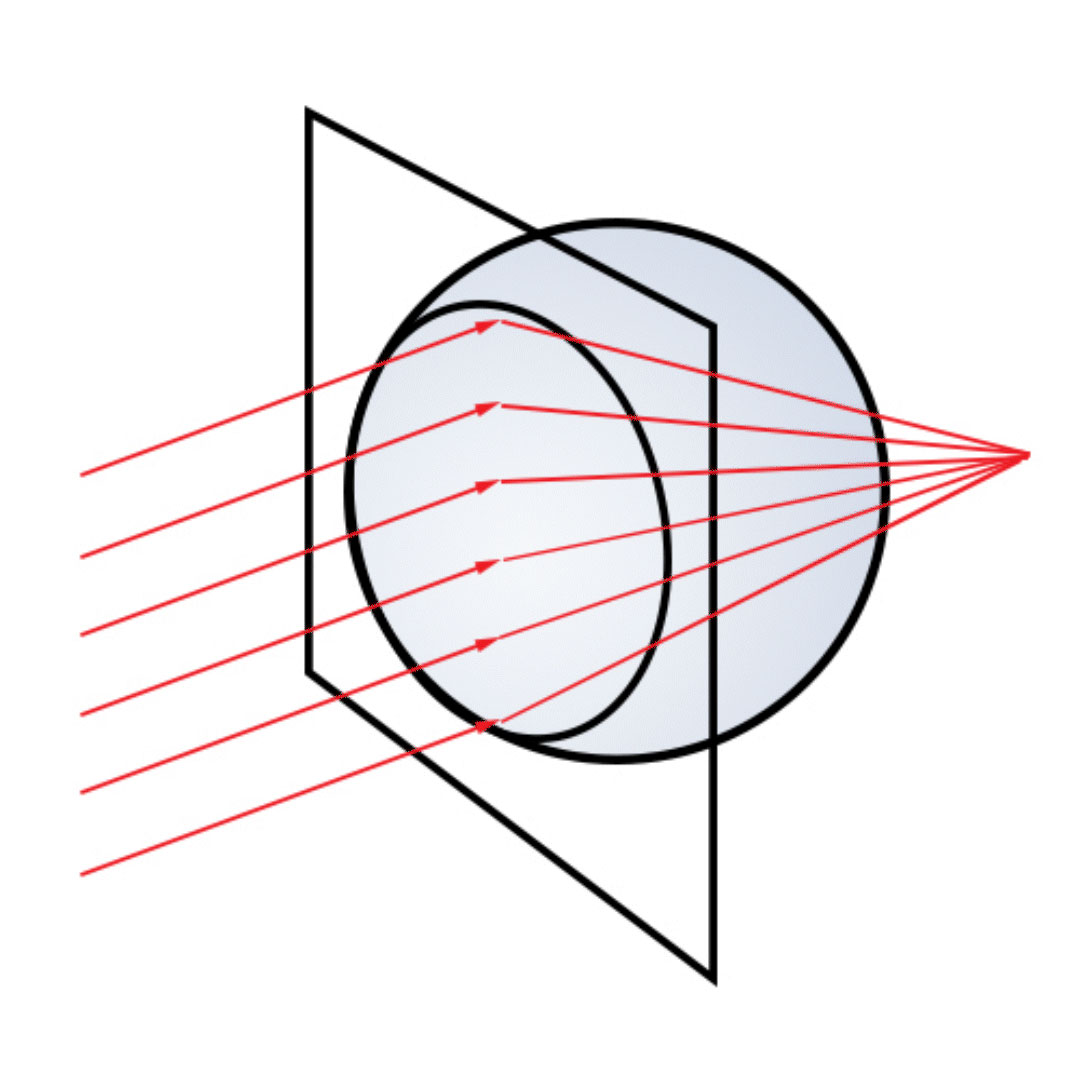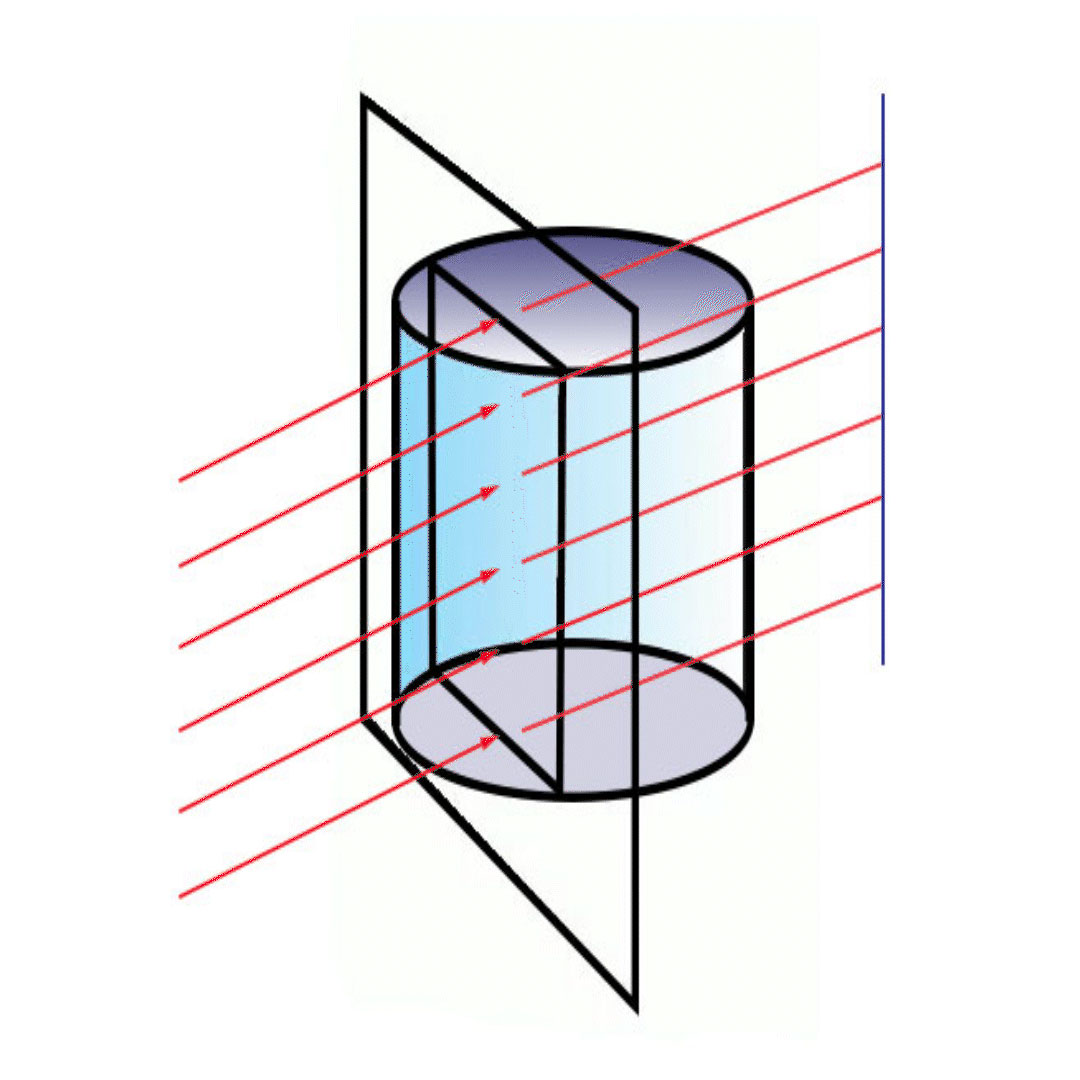How do eyeglasses work?
Why do we even sell glasses? Because glasses help. Right?
If you can see well with glasses, that’s great. But let’s dig a little deeper - how do glasses work and what does perfect vision actually mean?
What Is Perfect Vision?
When you wear glasses, the goal is usually to see 20/20 - that magical “perfect” vision where you can see details clearly at 20 feet. That’s what all those “1 or 2?” tests during the eye exam are working toward.
But here’s the catch: that “perfect” vision only applies to a tiny spot in your eye.
Your Fovea/Macula: The Sweet Spot
Inside your eye is a special spot on your retina called the fovea. It’s packed with cones - the cells that let you see fine detail and color.
That dense cluster of cones is your high-definition zone. And it’s tiny - it only makes up about 1-2 degrees of your total field of view.
So when you write a new glasses prescription, the goal is to make that tiny sweet spot as clear as possible.

Why Do We Want 20/20?
Simple:
- You can read street signs while driving.
- You see details clearly when you need them.
- You spot hazards sooner.
Perfect vision helps you navigate the world safely and comfortably.
Why Vision Gets Blurry
So why do we need glasses in the first place?
When light enters your eye, it passes through the cornea and crystalline lens. These bend (refract) the light to focus a clear image onto the fovea.
But sometimes the system doesn’t work perfectly:
- The shape of your cornea can be off.
- Your lens can lose flexibility.
- Or your eyeball might be longer or shorter than average.
That’s where glasses come in - they help focus incoming light just right.
How Glasses Fix It
Think of glasses as adding an extra lens to the system.
They bend incoming light so that the cornea and lens can create a clear image on the fovea.

What’s in a Prescription?
A glasses prescription fine-tunes how light bends to hit the right spot. Here’s how:
Sphere
Fixes if the image is too big (farsighted) or too small (nearsighted).

Cylinder & Axis
Correct astigmatism - when your cornea or lens curves unevenly and the image is stretched or blurred in one direction.

Add Power:
Compensates for lost focus ability (presbyopia) so you can read up close.
Prism
Aligns images from both eyes so your brain can stitch them into one clear picture - especially helpful after a head injury or when your eyes don’t naturally track together.
A Note on Prism
Most glasses bend light inward or outward to bring it into focus.
Prism lenses, though, don’t focus light, they redirect it. If one eye sees slightly higher, lower or to the side compared to the other, prism shifts the image so both match up perfectly.
So Why Do We Sell Glasses?
Because glasses work well for what they do - focusing light for sharp, clear detail on your fovea.
But there’s so much more to vision than just 20/20 clarity. Balance, depth perception, visual processing, field loss - these challenges often need more than glasses.
